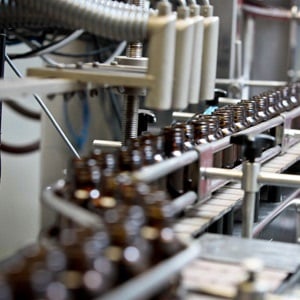
Photo supplied Wrapsa
R 36.1 billion worth of pharmaceuticals were manufactured in SA in the 2008/2009 financial year (according to a 2010 Deloitte report) and the industry is a solid contributor to the country’s GDP. While many of us readily take medication that we’ve bought, it’s not often that we ask the question of where did this tablet/gel/syrup come from, and how was it made?
South Africa’s membership with PIC/S (Pharmaceutical Inspection Convention, and Pharmaceutical Inspection Co-operation Scheme) means that the pharmaceutical industry as a whole is required to adhere to a stringent set of international industry standards. These standards encompass the entire process of creating medicines, from the original raw materials through to the final, packaged product on store shelves. While a worryingly large number of complimentary medicines available for public consumption are produced outside of these guidelines, the industry is changing rapidly and enforcement of these standards is beginning to take effect.
“Record keeping is a major part of complying with these standards,” says Jannie Nel, responsible pharmacist for Wrapsa, the country’s largest contract pharmaceutical manufacturer. “In 5000 years from now, when palaeontologists of the future discover our plant, they may mistake us for a paper factory,” he muses. “The amount of detail that goes into record keeping for pharmaceutical manufacturing is remarkable, and these records need to be stored for long periods to ensure we are able to revisit every aspect of the making of a particular pharmaceutical product, should we need to. Documentation is a cornerstone of GMP (Good Manufacturing Practice) and traceability is part thereof,” he explains.
A well documented system
This documented system, including the Batch Manufacturing Record, covers each step in the manufacturing process, and each manufactured batch of a product is allocated it’s very own version. This highly in-depth, extensive collection of checklists and paperwork includes detailed records from the receiving of raw materials, thorough cleaning records for each area of production, continuing right through to final product packaging and distribution guidelines. “Our records in the laboratory, for example, are so in-depth that even the previous materials used in a particular test area over a number of weeks, who was handling them, what the environmental conditions – such as temperature -were, are recorded,” says Nel.
“In a high-risk based industry such as pharmaceutical manufacturing, processes and assessments are vital for all products. Validations - whereby the processes, cleaning methods, machinery operation, mixing techniques etc. are tested to ensure that the exact same outcome is achieved each and every time, with no variations in the final result – are also carried out across the board. For example, when machinery such as a tablet press is being validated, it is tested to see that each individual tablet is identical to the others. This on-going activity forms part of pharmaceutical manufacturing safety practices, and ensures that the product is uniform.”
The process of manufacturing medication correctly in a pharmaceutical plant starts with incoming materials. “According to proper practices, you need to verify that the materials coming in are correct, and we quantify the ingredient to ensure it has the correct potency. This is done in a laboratory through a series of pharmacopoeial tests. These tests are guided by long-standing structures, provided by the British, EU and US Pharmacopoeia, which are updated annually,” Nel continues.

Next, the raw materials are transferred to the Warehouse and Dispensaries. The ingredients are dispensed in the exact weights and quantities that are needed, and careful attention is paid when combining ingredients.
“During manufacturing process, there are a number of in-process quality checks that are required,” explains says Manfred Boensch, quality assurance manager at Wrapsa. “The inspections include checking that the correct mixing times and techniques are being used, as well the temperature and environments.”
Checked, tested and shipped off
Once manufactured, there are also a number of quality checks to ensure that product complies with specifications such as its size and shape and whether it has the correct hardness, friability, disintegration and dissolution properties etc., as laid out in the specified limits,” Boensch continues. “Once approved, the final pharmaceutical product goes into the packing line, which is yet another carefully monitored part of the process. Things like batch numbers and expiry dates as well as packaging componentry such as labelling, printing and inserts, are scrutinised.”
Before a product is released into the market, a sample unit from the batch goes back to the laboratory, along with the Batch Manufacturing Record. “Validated methods are used to test the sample units using sophisticated techniques such as high performance liquid chromatography (HPLC), gas chromatography (GC), UV Spectrophotometry and Atom Absorption (AA),” says Nel. “These methods test that the product complies with its registration requirements, and ensures the product is safe and effective – we make sure it does what it claims to on the label.”
Once the responsible pharmacist is satisfied that the product is perfect, it gets packed and put into shipment parcels. The responsible pharmacist and quality control department then do a final, full audit of all records and processed laboratory results, as well as a final analysis of the physical product. The customer is then sent a notification of the responsible pharmacist’s final approval. “We also provide our customer with the batch manufacturing record and sample unit for their own scrutiny,” says Nel.
From there, these medications are distributed to the retail environment by the customer, where ordinary people are able to purchase the products they need to assist with a vast range of ailments. Being one of the highest grossing industries in the world, it is certainly reassuring to know the manufacturing of most reputable brands of pharmaceuticals is dictated by incredibly stringent and extensive standards.




 Publications
Publications
 Partners
Partners










